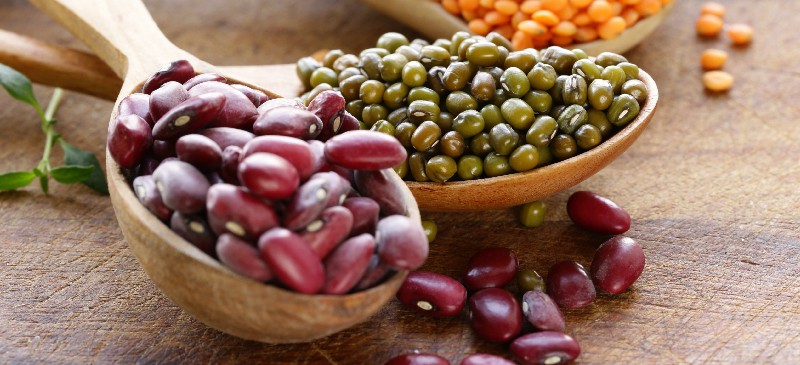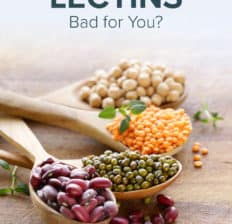This Dr. Axe content is medically reviewed or fact checked to ensure factually accurate information.
With strict editorial sourcing guidelines, we only link to academic research institutions, reputable media sites and, when research is available, medically peer-reviewed studies. Note that the numbers in parentheses (1, 2, etc.) are clickable links to these studies.
The information in our articles is NOT intended to replace a one-on-one relationship with a qualified health care professional and is not intended as medical advice.
This article is based on scientific evidence, written by experts and fact checked by our trained editorial staff. Note that the numbers in parentheses (1, 2, etc.) are clickable links to medically peer-reviewed studies.
Our team includes licensed nutritionists and dietitians, certified health education specialists, as well as certified strength and conditioning specialists, personal trainers and corrective exercise specialists. Our team aims to be not only thorough with its research, but also objective and unbiased.
The information in our articles is NOT intended to replace a one-on-one relationship with a qualified health care professional and is not intended as medical advice.
Are Lectins Bad for You? Pros & Cons of Lectin Foods
March 24, 2023

Although lectins are found packed into many highly nutritious foods, they’ve come under fire lately as a hidden source of health issues and inflammation, placing them among the list of antinutrients in foods. In fact, some nutrition experts claim that these seemingly harmless proteins could have some seriously detrimental effects, throwing your immune system out of whack and upping your risk of chronic disease.
On the other hand, some argue that the benefits of lectin-rich foods outweigh the potential adverse health effects, noting that simple steps can be taken to minimize lectin content in the foods you eat every day.
So what foods contain lectins? Are lectins bad for you, or is it all just hype?
Let’s dig in and find out.
What Are Lectins?
Lectins are a large family of proteins that are found throughout the food supply but are especially common in grains and legumes. The lectins in food bind to carbohydrates, forming glycoproteins. These glycoproteins perform many functions within the body, from regulating the immune system to keeping protein levels in the blood under control.
However, consuming too many lectins can also have adverse effects on health, with some research showing that they could cause adverse symptoms like vomiting and diarrhea and may also contribute to leaky gut and could cause alterations in immune function.
Fortunately, there are many ways to reduce the lectin content of your food without going on a lectin-free diet or severely restricting your intake altogether. Cooking, sprouting, soaking and fermenting your foods can cut down on lectin concentration to help promote better health.
Lectins were first discovered in plants over 100 years ago. Microbiologist Peter Hermann Stillmark is credited with setting the earliest lectins definition and description in 1888. For his doctoral thesis at the University of Dorpat, he presented his findings from an experiment where he isolated ricin, a type of toxic lectin that is found in castor beans.
In the years that followed, scientists began gaining a deeper understanding of the role that lectins play in both the diet and in nature. They also began garnering more attention, as some health professionals started singling them out as a contributor to hidden health issues.
Dr. Steven Gundry, for example, is a cardiac surgeon and well-known advocate of the plant-based diet. In 2017, Gundry published a book called “The Plant Paradox: The Hidden Dangers in ‘Healthy’ Foods that Cause Disease and Weight Gain,” which explored the effects of lectins on health and explained which ones to avoid in your diet.
While it’s true that excess consumption of lectins can come with some negative consequences, most health experts are in agreement that most foods high in lectins are also rich in important nutrients and should be of little concern when cooked properly and paired with a healthy diet.
Lectins vs. Leptins
Although just one letter separates lectins vs. leptins, there are plenty of differences between the two. While lectins are a type of carbohydrate-binding protein, leptin is actually a hormone found in your body.
Leptin is often dubbed the “starvation hormone” because it’s produced by your fat cells and sends a signal to your brain when you’ve had enough to eat. It’s believed to play a role in energy balance and weight control, with research — including a study out of the Division of Neuroscience, Oregon National Primate Research Center at Oregon Health & Science University — showing that leptin resistance could disrupt the function of this hormone and may be linked to obesity and weight gain.
Pros and Cons
So are lectins really bad for you? While it’s true that eating too many foods with lectins can cause adverse effects on health, lectins also play many vital roles within the body. They regulate cell adhesion and are involved in immune function and the synthesis of glycoproteins.
Lectins are also involved in immune regulation, and some research indicates that they may have antimicrobial properties as well. In fact, they have been shown to be effective against several types of bacteria, including the strain that causes staph infections and E. coli.
Lectins may also help fight off fungi and viral infections, with in vitro trials suggesting that they may help block the growth of the specific fungus responsible for yeast infections.
Not only that, but some studies also show that certain lectins could even possess anti-cancer properties, too. According to a 2015 review out of China published in the Cell Proliferation, plant lectins can modify the expression of specific immune cells and alter signaling pathways to help kill off cancer cells and block tumor growth.
That being said, there are some definite downsides associated with lectin consumption as well, particularly when it comes to the connection between lectins and inflammation.
They are difficult to digest, and consuming large amounts can damage the gut wall and lead to leaky gut syndrome, a condition characterized by increased permeability in the gut. This results in the leakage of substances from the intestines into the bloodstream, causing widespread inflammation throughout the body.
Lectins also act as an antinutrient, meaning that they can interfere with digestion and absorption of foods, upping the risk of nutritional deficiencies.
Plus, because lectins are also involved in the regulation of the immune system, some evidence — including a study out of Colorado State University’s Department of Health and Exercise Science published in the British Journal of Nutrition — shows that they could also play a role in autoimmune conditions, such as rheumatoid arthritis. Autoimmune conditions are a result of the immune system attacking healthy cells in the body, resulting in symptoms like inflammation, fatigue and chronic pain.
Additionally, consuming too many lectins can cause more immediate negative side effects as well, including digestive problems. Eating uncooked beans, for example, can cause lectin poisoning and gastroenteritis, a condition that causes symptoms like nausea, vomiting, cramps and diarrhea.
Lectin Foods
What foods are high in lectins? Although they are found in abundance throughout the food supply, they are especially common in many types of grains and legumes.
However, that doesn’t mean that you need to cut out all foods containing lectins from your diet. Practicing proper preparation with these foods that contain lectins can reduce lectin content, allowing you to take advantage of the unique heath benefits that they have to offer.
Here are 10 of the top lectin foods:
- Potatoes
- Eggplant
- Soybeans
- Lentils
- Peppers
- Wheat germ
- Red kidney beans
- Peas
- Tomatoes
- Peanuts

Uses in Ayurveda and TCM
Many lectin-rich foods, such as grains and legumes, fit well into an Ayurvedic diet and have been used in other forms of holistic medicine, such as Traditional Chinese Medicine, for thousands of years.
According to Ayurveda, legumes are considered astringent in taste, which means that they are drying. They are used to promote elimination and regularity, suppress appetite, and satisfy the stomach.
It’s generally recommended to soak legumes prior to consumption, not just to cut down on lectins, but also to enhance their nutritional value and reduce antinutrient content.
Meanwhile, in Traditional Chinese Medicine, most beans are believed to have a neutral effect on the body’s balance. They’re also thought to decrease swelling and act as a natural diuretic to remove toxins and waste products from the body more efficiently.
Other high-lectin foods, such as tomatoes, are considered cooling and are said to improve digestion and detoxification.
Signs of Too Many Lectins
Consuming high amounts of lectins can cause a wide range of adverse side effects and may even be linked to issues like leaky gut syndrome and certain autoimmune conditions. Here are a few of the most common symptoms that may occur with excess lectin intake:
- Bloating
- Fatigue
- Joint pain
- Gas
- Stomach discomfort
- Vomiting
- Diarrhea
- Constipation
- Skin changes
Autoimmune conditions may also be linked to a high intake of lectins. If you suffer from conditions like rheumatoid arthritis, lupus or inflammatory bowel disorder, cutting down on your intake of lectins by cooking your foods thoroughly may help improve symptoms.
How to Remove or Limit
Although lectins have been associated with a slew of negative side effects, there’s no need to cut out lectin-rich foods from your diet altogether. With proper preparation, you can easily reduce the lectin content of your foods, making it easy to incorporate plenty of foods high in polyphenols and low in lectins into your diet.
Cooking legumes, in particular, can nearly eliminate all lectins, with one study out of the Roweti Research Institute’s Division of Nutritional Sciences in Scotland even showing that boiling soybeans for as little as five minutes virtually eliminated lectin activity. Because legumes are generally eaten cooked and not raw, this means that most legumes in your diet are likely very low in lectins.
Soaking and sprouting grains and seeds can also be an effective method to reduce lectin content. Sprouting, also known as germination, is a process that involves soaking seeds for up to 24 hours and then repeatedly rinsing and draining them every few hours for several days at a time.
Not only can sprouting decrease the lectin content of your grains and legumes, but it can also enhance the nutritional profile of your foods while reducing the amount of other antinutrients that interfere with digestion as well.
Fermenting your foods can also help reduce the amount of lectin content. Fermentation allows the beneficial bacteria to digest the lectins and other antinutrients in foods to enhance the overall nutritional profile, as displayed in research published in the journal Food Science & Nutrition.
Plus, fermentation also supplies valuable probiotics to your diet to give gut health a hearty boost.
When it comes to how to remove lectins from tomatoes or potatoes, breaking out the pressure cooker may be your best bet. Simply add water, lock the lid in place and start cooking.
Although lectins have been associated with several negative effects and adverse symptoms, they are typically found in nutrient-dense foods that supply a wealth of important vitamins and minerals to promote better health.
Rather than focusing on eliminating lectin-rich foods from the diet altogether, it’s better to work on reducing lectin content through cooking, sprouting or fermenting foods instead so you can still take advantage of the health-promoting properties of these nutritious ingredients.
Final Thoughts
- Lectins are a family of proteins that bind to carbohydrates and play an integral role in everything from immune function to glycoprotein synthesis.
- Some research shows that they may have antimicrobial properties and could also aid in cancer prevention.
- However, consuming high amounts may irritate the digestive tract and contribute to inflammation and impaired nutrient absorption.
- What foods have them? They are present throughout the food supply but are especially high in grains, legumes and nightshade vegetables, like tomatoes, potatoes and eggplants.
- Instead of focusing on cutting lectin foods out of your diet altogether, though, focus on practicing proper preparation techniques to decrease lectin content, and include a wealth of essential nutrients in your diet from healthy lectin-containing foods.
- Cooking your foods before eating them eliminates lectins almost entirely from foods. Soaking, sprouting and fermenting your foods can also decrease lectin content. You can also try pressure cooking, which is another option for how to reduce them in potatoes and tomatoes.











